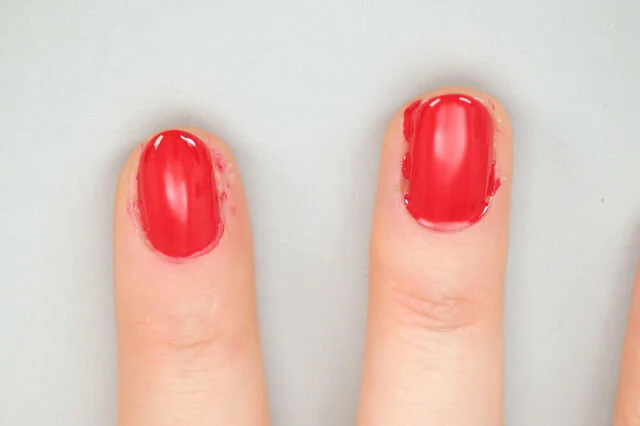
O.P.I. Redesign
Group Project | Product Design | UX
Project: Go to a local supermarket and find a product with design flaws. Work with your team of three graphic design and one product design students to develop new packaging that solves the problem you found.
When we passed by the nail polish section in our local Meijer, we immediately recalled times when we’d struggled to do our own nails because the handle was so difficult to hold. Our thinking quickly moved to people with motor disabilities and how much more difficult something like this must be for them. From there our research began.
We interviewed dozens of people who were members of a Facebook group for people with motor disabilities. Our survey showed that our suspicion was correct– nail polish handles are not accessible, making people feel discouraged and forcing them to give up activities that they love.
“I’ve just completely given up… even professionals won’t do my nails anymore.”
Our Research
Through our interviews, secondary research, and research into best practices, we discovered three main factors that assist people with motor disabilities: weight, size, and grip. All three of these combine to create an effect that requires the user to use the big muscles in their arms rather than the small ones in their fingers, which is much better for people who struggle with fine motor movements.
Lo-fi
After identifying these factors, we began the prototyping process. Our first lo-fi prototypes were whiteboard sketches and Play-doh, two processes that allowed us to move through ideas extremely quickly.
Mid-fi
Next we needed to move onto more permanent prototypes. Clay was our best friend here, as it was easy to mold and simulated the weighted experience we needed to test. We also created prototypes with flower foam, tennis balls, and other found materials to test different weights and tactile experiences, but clay is where we succeeded.
We discovered that the reverse tear drop shape tested best, pictured in the middle on the blue nail polish bottle.
Hi-fi
Our product design student modeled our final design in a 3D modeling program, including a cross section showing the layers we tried to simulate in our mid-fi prototypes. The idea is that a squishy silicone coating (the white) surrounds some kind of spongey material (the yellow) to improve grip, which contains a heavy weight (the black).
We designed this handle to fit onto any OPI nail polish bottle, so our users don’t feel excluded from our existing products.
User Testing
Once we landed on our shape and size, we started user testing on real people with motor disabilities. The results spoke for themselves. There was a significant difference between the hand painted without our handle and the one painted with. Our test subjects asked when they’d be able to get one to keep for themselves!
This was one of the first time I and my team experienced our research and work genuinely paying off for one of our target users, and it was amazing. In the future, we all agreed we’d like to continue developing this brand’s visuals to reflect the impact the product can have on nail polish users.
What’s next?
This project shows a ton of potential to help people, but it’s not done yet. In the future, our group would like to
Develop a high-fidelity prototype with real rubber coating
Design packaging, displays, and marketing for the product
Continue testing on a wider pool of participants to collect qualitative data













